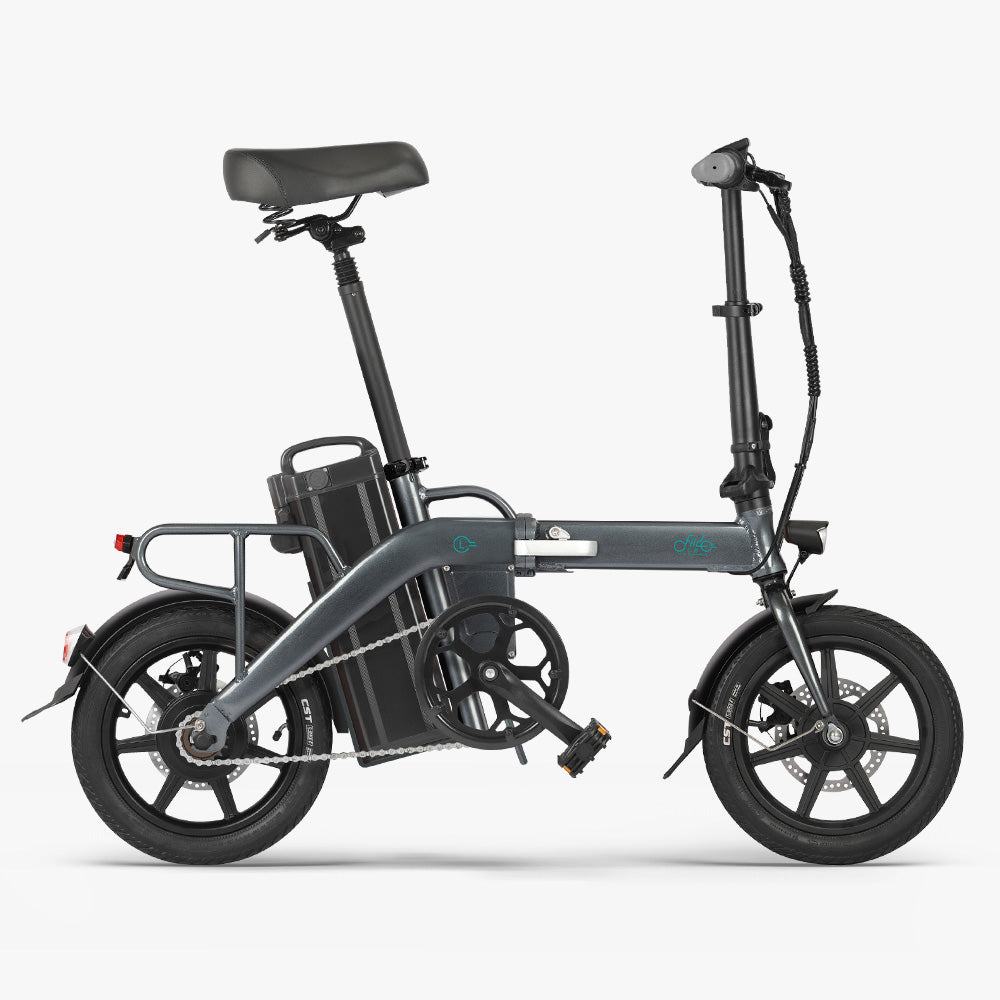Waterproof rating of electric bicycles

Meaning of IP rating:
The first number indicates the dustproof level, ranging from 0 to 6, the larger the number, the better the protection level.
The second number indicates the waterproof level, ranging from 0 to 9, the larger the number, the better the waterproof performance.
Common waterproof levels for electric bicycles:
IP54: indicates a dustproof level of 5, which means that it can partially prevent dust from entering, and a waterproof level of 4, which means that it can prevent splashing water from all directions. The battery and motor parts of many electric bicycles usually reach this level and can cope with light rain or humid environments.
IP65: This level is higher, indicating complete protection against dust ingress and protection against low-pressure water spray from all directions. Suitable for more severe weather conditions, such as moderate rain.
IP67: A very high protection level, indicating complete dustproof and can be immersed in water for a short period of time (usually up to 1 meter depth, within 30 minutes).
For daily use, electric bikes are usually not designed to be fully waterproof (such as IP68 or IP69) because they are not intended to be immersed in water for a long time, but IP54 or IP65 level protection is sufficient for use in rainy or slippery environments. If you need to use an electric bike on a rainy day, it is recommended to choose a model with a protection level of at least IP54, and try to avoid exposing the electric bike to heavy rain for a long time to ensure the safety of its electrical system.
How to Ride Safely on Rainy Days
Riding an e-bike in the rain requires extra caution to ensure your safety. Wet conditions can impact visibility, traction, and braking performance. Here are ten essential tips, including detailed explanations and practical examples, to help you navigate rainy days safely.
1. Slow Down:
In the rain, the braking distance of an e-bike increases due to reduced traction. On dry roads, it takes about 3 to 4 meters to stop, while on wet roads, this distance can extend to 4.5 to 5 meters. Riding slower allows you more time and distance to stop safely, reducing the risk of accidents.
2. Maintain a Greater Following Distance:
Brakes respond less effectively on wet roads. Normally, a safe following distance is about 2 seconds, or roughly 6 meters. In the rain, this should be increased to 3 seconds, or at least 9 meters, to provide sufficient reaction time and help prevent collisions.
3. Use Proper Tires and Tire Pressure:
Choose tires with a non-slip tread pattern and maintain the tire pressure within the optimal range (e.g., 2.0 to 2.5 bar). Properly inflated tires with good tread reduce the risk of skidding and enhance the stability of your e-bike in wet conditions, allowing for safer handling and control.
4. Wear Waterproof Clothing:
Waterproof jackets, pants, and shoe covers keep you dry and warm, which helps you stay focused on the road and reduces the risk of catching a cold. Staying dry can also improve your concentration and reaction time, making your ride safer overall.
5. Increase Visibility:
Rain limits visibility, making it crucial to use front and rear lights and wear reflective clothing. These measures increase your visibility to other road users. With lights on and visible gear, you can be seen from 30 meters away, significantly reducing the risk of collisions.
6. Avoid Puddles:
Puddles can conceal potholes, debris, or slippery surfaces that could lead to falls. Avoid riding through puddles by slowing down and choosing alternative routes. Whenever possible, stick to flat and dry paths to minimize the risk of slipping.
7. Lubricate the Chain and Moving Parts:
Rain can wash away the lubrication on your e-bike's chain and moving parts, leading to rust and decreased performance. Use a wet-weather-specific lubricant to protect your chain, gears, and other moving components. Proper lubrication helps maintain smooth operation and prolongs the lifespan of your bike’s drivetrain.
8. Monitor Weather Conditions:
Always check the weather forecast before heading out. If heavy rain, thunderstorms, or strong winds are expected, consider postponing your ride or choosing a safer route. Riding in severe weather can increase the risk of accidents due to poor visibility and road conditions.
9. Check and Adjust Your Brakes:
Wet conditions can reduce brake performance, making it crucial to check and adjust your brakes regularly. Test your brakes before starting your ride, and ensure they are responsive. Clean any debris from the brake pads and rims, and replace worn components to maintain optimal braking power.
10. Use bicycle mudguards:
On rainy days, mudguards are a good helper to prevent mud and water from splashing. The front and rear mudguards can effectively block the mud and water thrown up from the tires, which can not only keep your clothes clean, but also prevent mud and water from splashing into the electric components, protect the key components of the bicycle from moisture, and reduce maintenance costs.

Key parts protection
Battery Protection
The battery is the most crucial part of your ebike and the most expensive part to replace. Moisture can affect its performance, but most ebike batteries have protective casings designed to keep water out or are internally mounted, protecting them from the elements.
However, prolonged exposure to rain can still pose risks. It's essential to check that your ebike's battery compartment is sealed correctly. If you know you'll ride in wet weather regularly, choose a bike with a high IP rating for added protection. Some advanced models feature additional waterproofing measures to safeguard the battery against moisture.
Motor Protection
Your ebike's motor is another critical component that needs protection from water. Many modern ebikes come with waterproof motors designed to withstand wet conditions. These motors are typically sealed to prevent water ingress, ensuring reliable performance even on rainy days. However, they often have drain holes designed to let condensation run out. In extreme circumstances, water can get in these drain holes, but it's unlikely.
Maintenance Tips for Wet Weather Riding
Regular maintenance is key to ensuring your e-bike remains in good condition, especially if you frequently ride in the rain.
Post-Ride Care
Wet weather can negatively affect the condition of your electric bike. So, you should maintain it after riding in the rain. Here are some steps to follow:
1. Dry the Bike: Wipe down the frame, battery compartment, and motor with a dry cloth to remove moisture.
2. Lubricate the Chain: Rain can wash away lubrication, so reapply a suitable chain lube to prevent rust. If you know you're going back out in the rain, use "wet lube," as it will stay on your chain longer.
3. Check Brakes and Tires: Inspect your brakes and tires for wear and tear. You should also ensure your tires are inflated to the correct pressures for optimum traction.
4. Store Properly: Store your ebike in a dry place to avoid prolonged exposure to moisture. You may want to bring your battery inside to avoid extreme cold and extend its life span.
Regular Inspections
- Electrical Components: Check all electrical connections regularly for signs of water ingress or corrosion.
- Battery Care: Ensure the battery compartment is dry and clean. Moisture here can lead to serious electrical issues.
Can I ride an electric bike in the rain? : Answered!
Yes, you can ride an electric bike in the rain. But follow the tips and choose an electric bike with adequate waterproofing, and you'll be safe. If you're looking for the perfect electric bike for riding in any weather, check out Fiido's options,from commuter e-bikes to off-road e-bikes, there are many types for you to choose from. Or check out the Fiido electric bike review to see how they perform.
Fiido L3 Long Range Electric Bike
Longest range folding electric bike under $1000.














